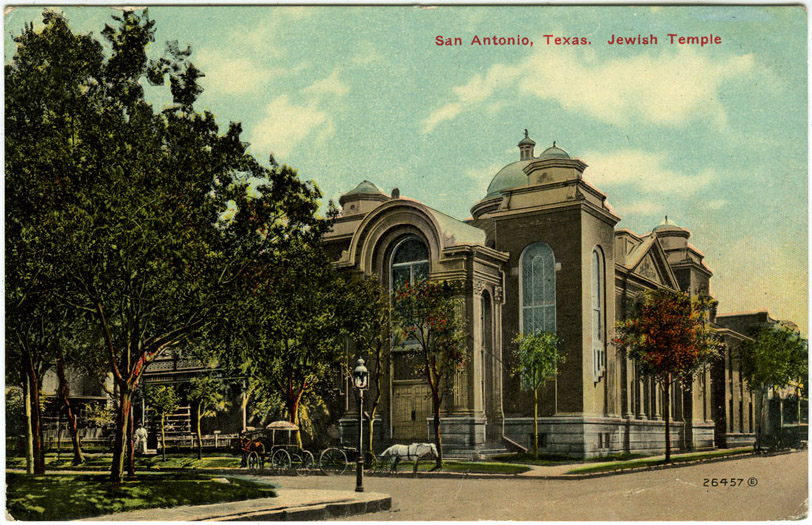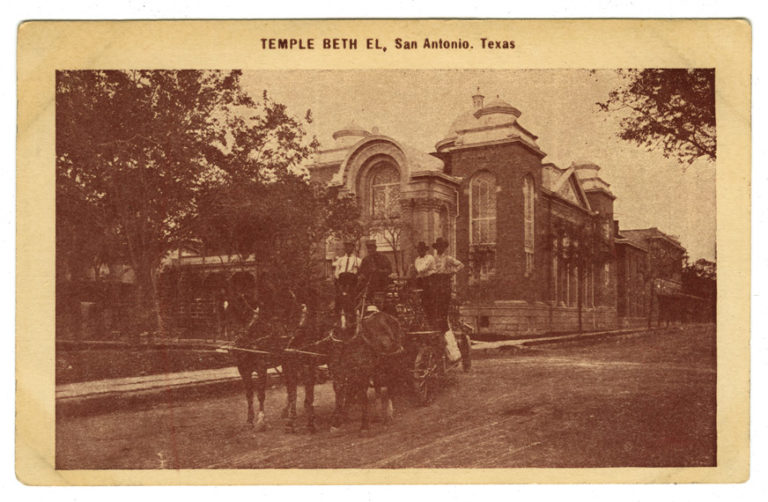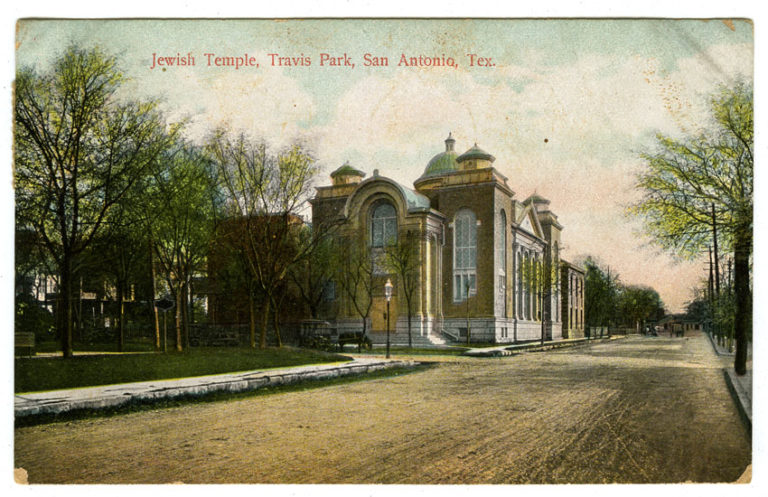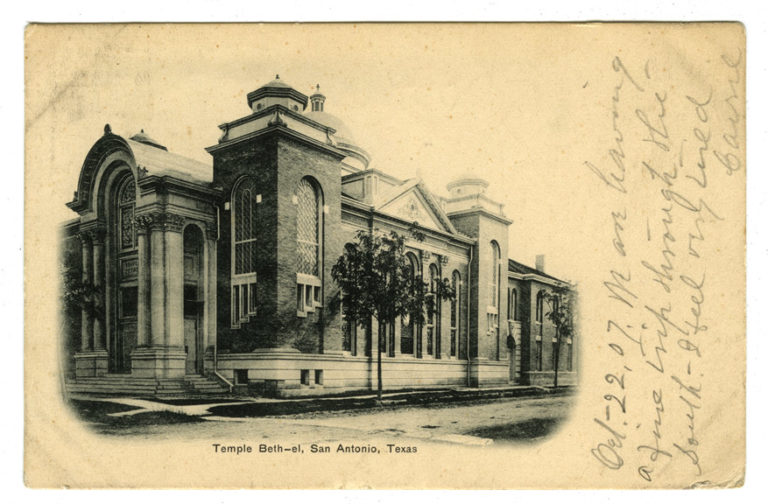6.3 San Antonio, Texas
Temple Beth-El, Travis and Jefferson streets
Harvey L. Page, architect, 1902
Paul Ebers, San Antonio, Texas, publisher; no date
Temple Beth-El (House of God), in San Antonio, Texas, was founded in 1874—the earliest Jewish congregation in South Texas. This postcard represents the congregation’s second building, a large classical-style structure dedicated in 1902.
The view is oblique. The main facade of the synagogue on Travis Street can be seen only at an angle, but it shows a central bay articulated with applied pilasters and surmounted by a pediment. This bay is flanked by two towers. The arrangement, however, lacks the expected flight of stairs and entranceway that any classical temple would demand. Instead the entrance is through a vestibule side wing at the far left of the building, set back from the tower and the sidewalk line. The structure has entrances on two sides through impressive arched openings, with an exceptionally high arch flanked by Corinthian columns facing Jefferson Street. The postcard view indicates that a dome was set over the sanctuary. Like the Temple in Atlanta, Beth-El stands out as an early example of the adoption of classicism by Reform congregations at the beginning of the 20th century.
In 1874, a group of 44 Jews established Congregation Beth-El. Most of these founders were relative newcomers to the city; of the 44, only nine were listed in the 1870 census as living in San Antonio. Reform from the start, Beth-El joined the Union of American Hebrew Congregations in 1875. Soon after its founding, the congregation raised money for a synagogue, soliciting Jewish communities in New York, Boston, and Philadelphia for contributions, and built a modest synagogue on Travis Square. Rabbi James Gutheim of New Orleans was the keynote speaker at the dedication, and according to a local newspaper, addressing a crowd “composed indiscriminately of Jews and Christians, Protestants and Catholics.” No images of this building are known.
By the turn of the century, the congregation had outgrown the small synagogue. It was demolished and replaced on the same site as the one shown here. The congregation grew, and in 1927, a new generation built—on Belknap Place in the Tobin Hill neighborhood—a third structure with an adjacent community center building. In later years, Beth-El added an auditorium, a social hall, chapel, and other facilities. As of 2021, the complex remains home to the congregation.



